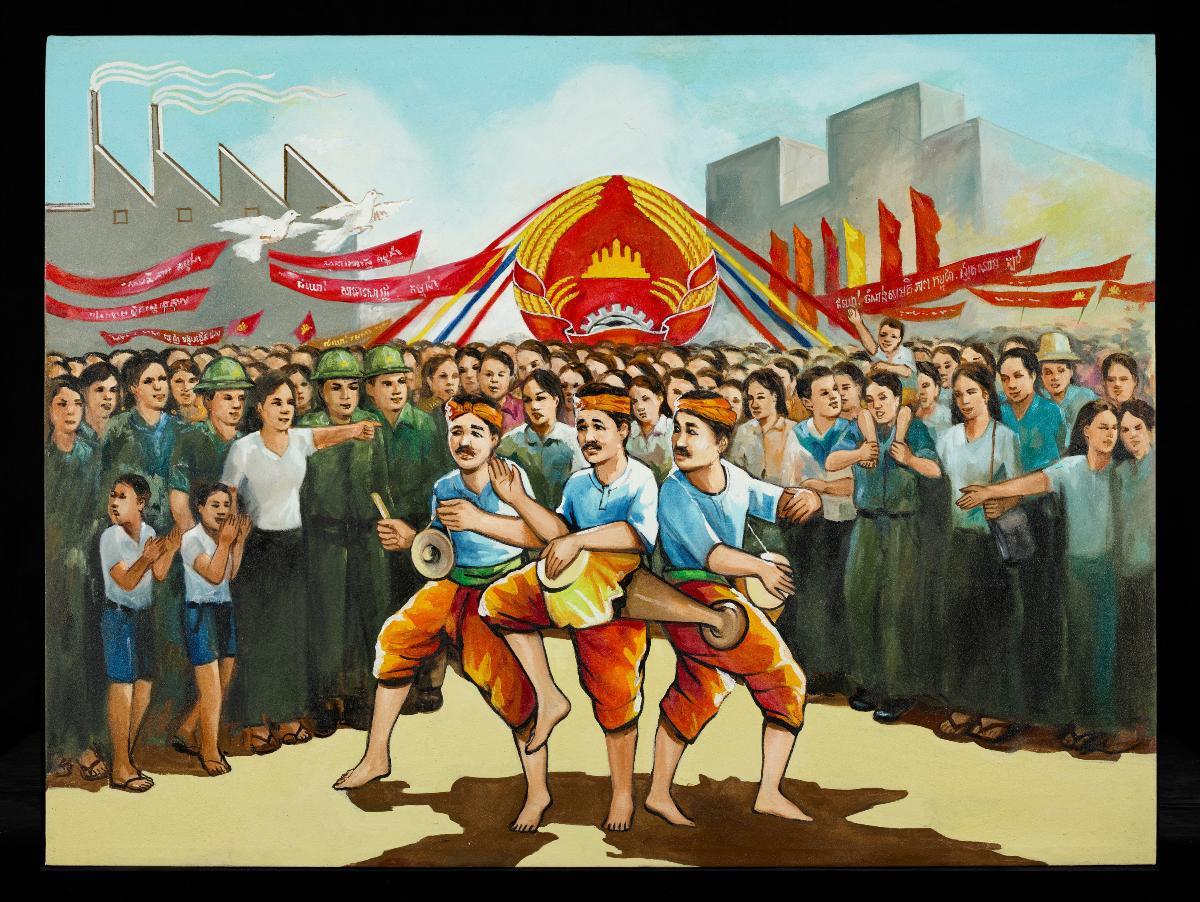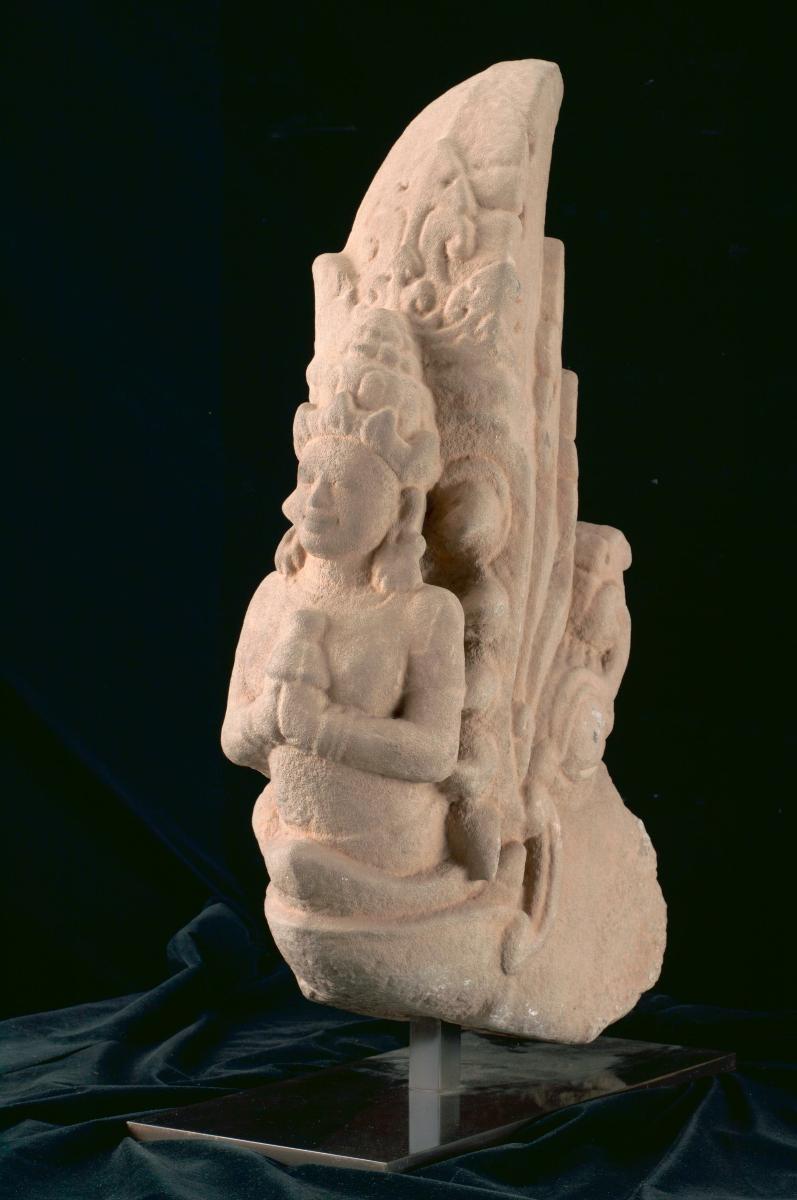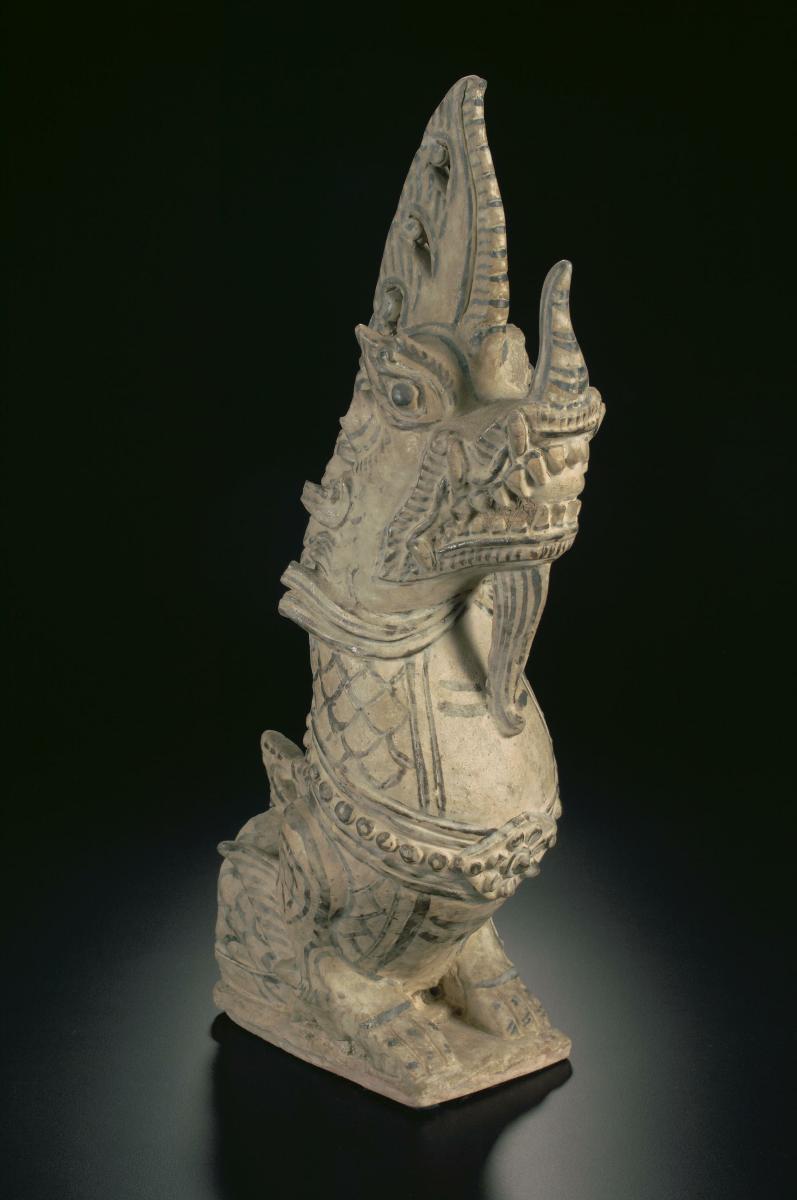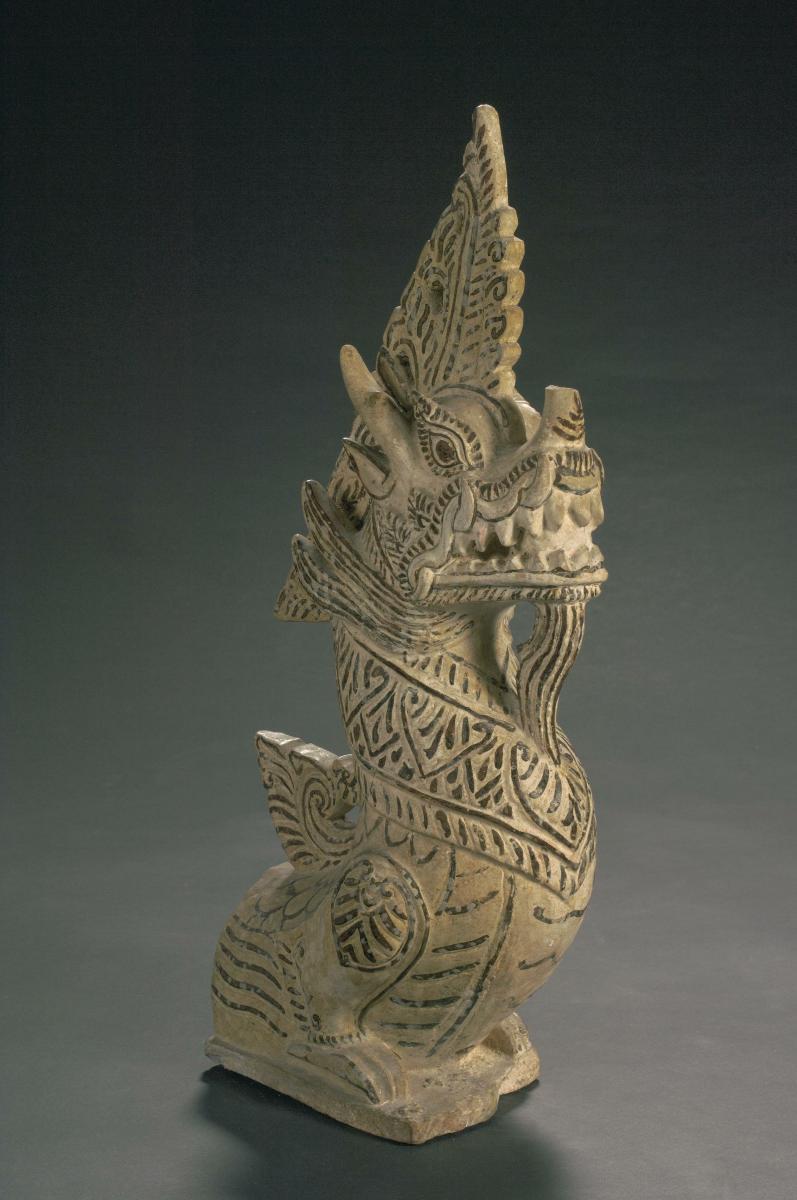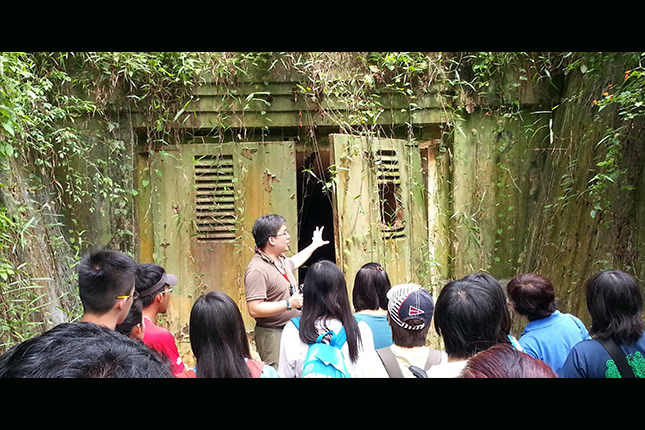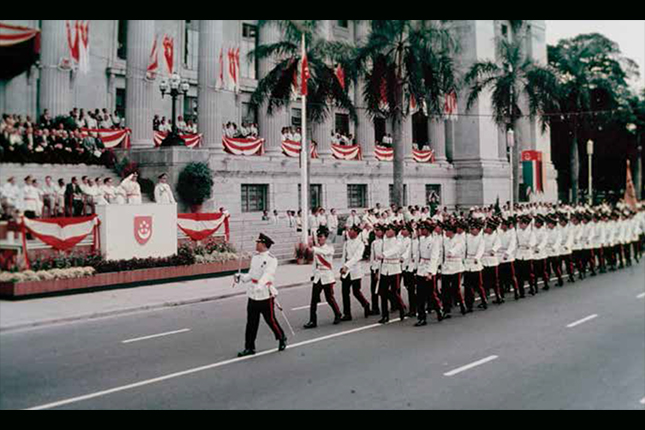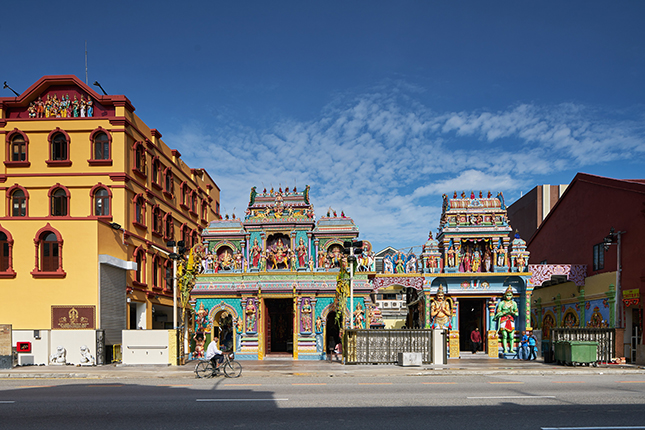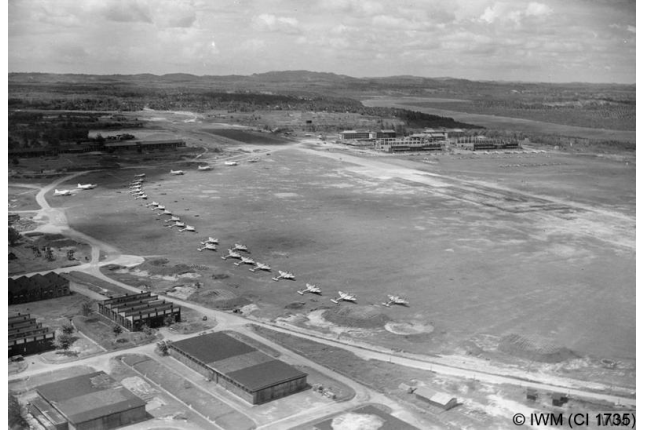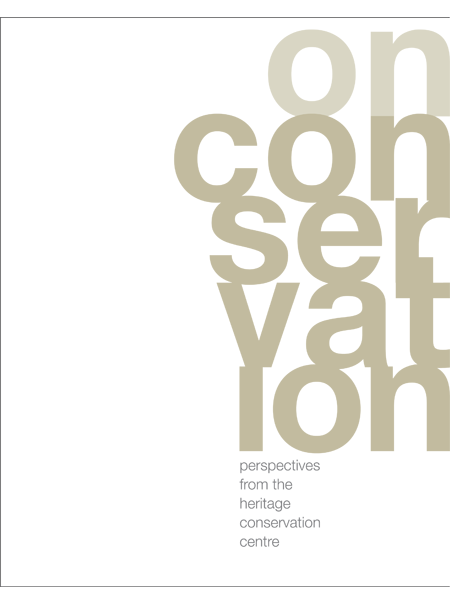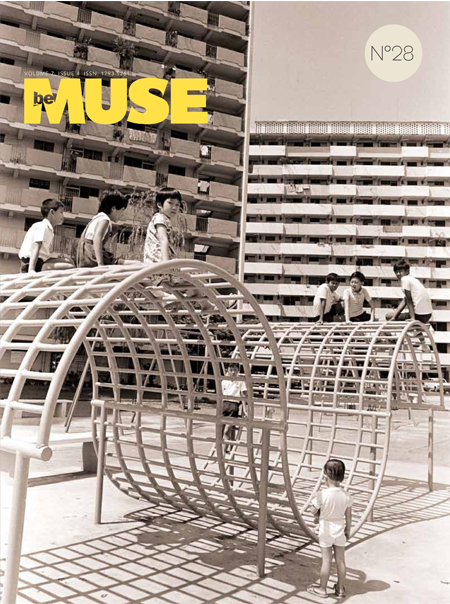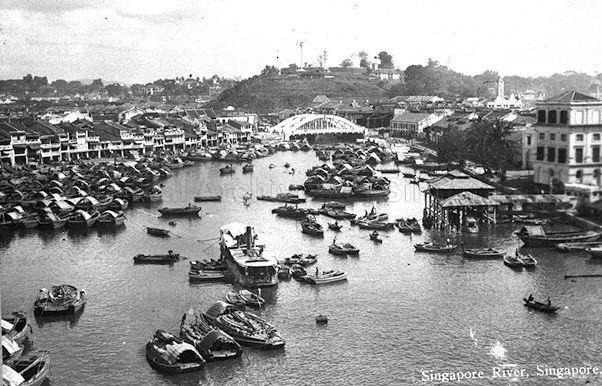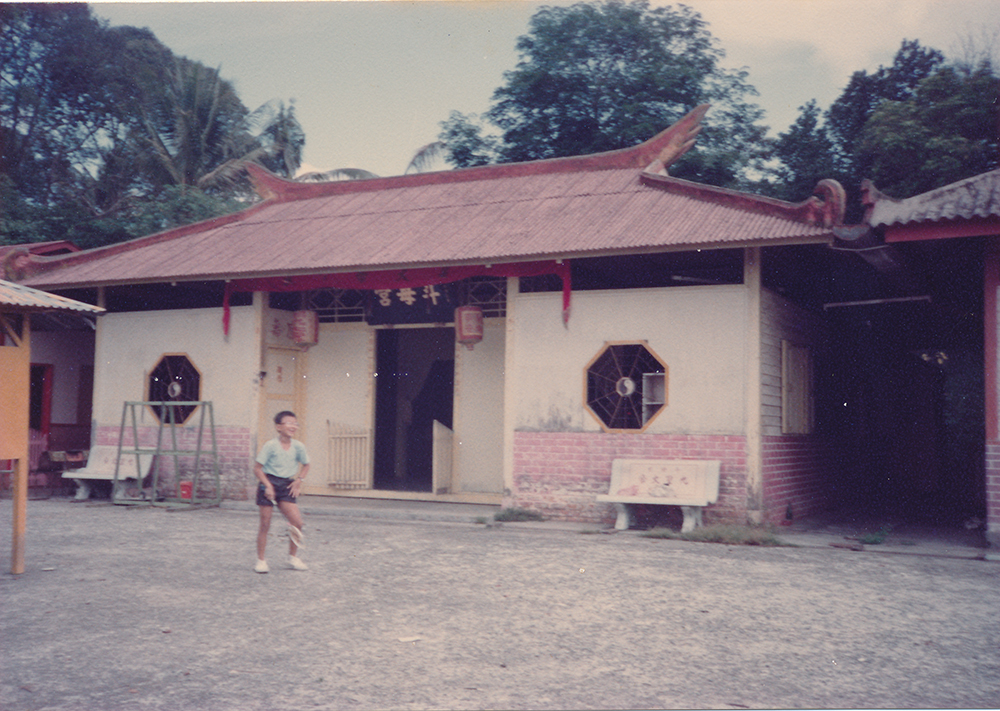Pech Song (b. 1947, Kandal, Cambodia) holds the unique position of having been commissioned to create paintings used as propaganda by 5 successive (and opposing) political regimes in Cambodia: first for Sihanouk’s royal government in the late 1960s, then for the US-backed Lon Nol government of the Khmer Republic (1970-75), then for Pol Pot’s Khmer Rouge in Democratic Kampuchea (1975-79), then for the Vietnam-backed People’s Republic of Kampuchea (1979-1989), then for Hun Sen’s post-1990s government. Song’s artistic and political flexibility, seamlessly transitioning from creating art used as propaganda from one regime to the next, is unparalleled in Cambodia’s art history. Also unparalleled is Pech Song’s ability to capture in his images the centrality of art and culture to the Vietnam-backed People’s Republic of Kampuchea (PRK) regime during the 1980s. This work was originally produced to commemorate 5 years of the overthrow of the Khmer Rouge on 7 January 1979, in an effort to garner popular support for the Vietnam-backed People’s Republic of Kampuchea (PRK) regime. The original work was reproduced on billboards around Cambodia, and has been lost. This work was reproduced by the artist based on a photograph documenting the original work. The central group in the painting shows a peasant (with bale of rice in her arms), soldier (with rifle in hand and dressed in uniform), worker (with wrench in hard, and dressed in a hard-hat), and artist (with canvas/sketchbook under his arm, and dressed in collared, button-down shirt). The familiar communist triad of worker, peasant, and soldier is expanded to include the figure of an artist, explicitly positioning artists as a distinct and integral component of the revolutionary vanguard, in the eyes of the artist, and by extension the PRK regime. Further emphasising the importance of arts and culture, to the left is seen a troupe of musicians playing Khmer instruments, and dressed in Khmer kaben sampot-trousers. Monks and people dressed in neat, pleated and collared clothes are depicted among the masses in the background to the right, making clear the PRK’s embrace of urban life, religion, and education, all of which had been banned during the Khmer Rouge regime.





